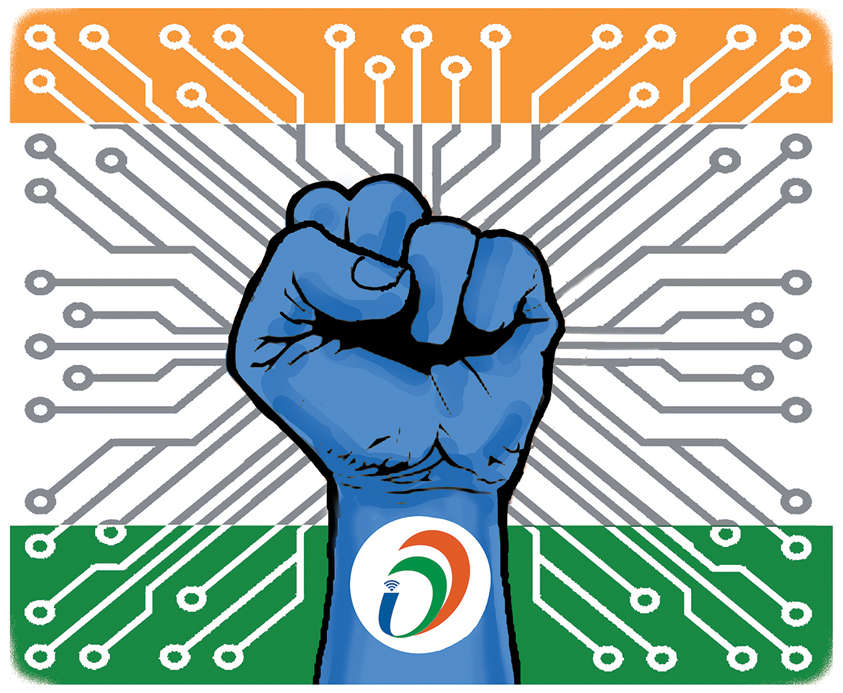
Digital India: How Technology is Transforming Governance and Public Services
Digital India leverages technology to modernize governance, enhance public service delivery, and increase transparency. Mobile apps, e-governance platforms, AI, cloud computing, and digital finance improve healthcare, education, agriculture, safety, and citizen participation. By connecting urban and rural populations, it bridges gaps in accessibility, accountability, and efficiency.
✨ Raghav Jain

Introduction
In the 21st century, technology has become the backbone of progress. India’s ambitious Digital India initiative, launched in 2015, aims to transform governance, streamline public services, and bridge the digital divide. By leveraging technology, government services are becoming more accessible, transparent, and efficient, benefiting citizens and businesses alike.
Digital tools are not just about smartphones or apps; they are redefining the way citizens interact with government, receive essential services, and participate in democracy. From online portals for tax filing to digital healthcare, technology is creating a seamless ecosystem that saves time, reduces corruption, and enhances public accountability.
This article explores how Digital India is transforming governance, improving public services, and empowering citizens, while highlighting practical ways individuals can benefit from these innovations. In the twenty-first century, technology has emerged as a powerful tool reshaping the way societies function, and India is no exception. The "Digital India" initiative, launched by the Government of India in 2015, seeks to leverage technology to transform governance and public service delivery. The vision of a digitally empowered society is being realized through the integration of information and communication technology (ICT) across government departments, creating a more efficient, transparent, and citizen-centric administration. The impact of technology on governance in India has been profound, changing the landscape of public service delivery and fostering inclusivity, accountability, and accessibility.
Digital technology has revolutionized the way citizens interact with government services. Traditional bureaucratic processes were often cumbersome, time-consuming, and prone to inefficiencies. Obtaining essential documents such as birth certificates, ration cards, or income certificates required multiple visits to government offices, long queues, and excessive paperwork. Today, digital platforms have streamlined these processes. Platforms like DigiLocker, e-Sign, and e-KYC enable citizens to access and verify documents online, reducing dependency on physical paperwork and minimizing human intervention. This shift not only saves time but also ensures accuracy, as digital records are less prone to manipulation or loss.
Moreover, technology has significantly enhanced transparency in governance. Corruption has long been a challenge in public service delivery, often resulting from opaque processes and lack of accountability. Digital platforms, by automating procedures and maintaining audit trails, reduce opportunities for corrupt practices. For example, the Public Financial Management System (PFMS) tracks government payments and subsidies, ensuring that funds reach the intended beneficiaries without leakage. Similarly, the Direct Benefit Transfer (DBT) scheme uses technology to transfer subsidies directly into citizens' bank accounts, bypassing intermediaries and reducing the risk of diversion of funds. Such digital interventions strengthen trust between the government and citizens, fostering a culture of accountability.
Another significant transformation facilitated by technology is the expansion of access to public services, particularly in rural and remote areas. India, with its vast geographical and socio-economic diversity, has faced challenges in delivering services uniformly across its population. Digital technology has bridged this gap, enabling citizens in remote regions to access government schemes, educational resources, healthcare services, and financial services. Initiatives such as Common Service Centers (CSCs) provide digital access points in villages, offering services ranging from government forms and certificates to digital payments and telemedicine consultations. Through such initiatives, technology has democratized access to governance, empowering marginalized populations and promoting social equity.
Healthcare and education, two critical sectors of public service, have been profoundly impacted by digital transformation. Telemedicine platforms and digital health records have expanded healthcare access, particularly during crises such as the COVID-19 pandemic. Citizens can now consult doctors remotely, book appointments, and access medical prescriptions online, reducing the burden on physical healthcare infrastructure. In education, digital learning platforms, online courses, and virtual classrooms have revolutionized the way knowledge is imparted. Students in rural or underserved areas can access quality educational content, participate in interactive learning, and prepare for competitive examinations without geographical constraints. By leveraging technology, the government has created more resilient and inclusive systems in sectors that are fundamental to human development.
The use of technology has also strengthened governance through data-driven decision-making. Digital platforms generate vast amounts of data, which can be analyzed to inform policy, allocate resources efficiently, and predict citizen needs. For instance, data collected through the Aadhaar system and various government portals allows authorities to track population trends, monitor welfare schemes, and identify gaps in service delivery. Predictive analytics and artificial intelligence (AI) applications are increasingly being employed to optimize traffic management, disaster response, and resource allocation. By harnessing the power of data, governance has become more proactive, strategic, and responsive to citizen needs, rather than reactive and rigid.
E-governance initiatives have not only improved service delivery but have also enhanced citizen participation in democratic processes. Digital platforms allow citizens to engage with government policies, provide feedback, and lodge grievances efficiently. Mobile apps and online portals facilitate real-time interaction, enabling governments to be more responsive and accountable. Participatory governance through technology encourages civic engagement, giving citizens a voice in shaping policies that affect their lives. This transformation is vital for fostering a more inclusive democracy where governance is not just top-down but also bottom-up, reflecting the aspirations and concerns of citizens.
However, despite the tremendous progress, challenges remain. Digital literacy, cybersecurity, and infrastructural limitations are significant barriers to achieving the full potential of Digital India. Many citizens, particularly in rural areas, may lack the skills or resources to fully utilize digital platforms. Ensuring cybersecurity and data privacy is crucial to maintaining trust, as digitization increases the vulnerability of sensitive information. Moreover, consistent internet connectivity and affordable access to digital devices remain critical for the equitable delivery of services. Addressing these challenges requires continuous investment in infrastructure, education, and policy frameworks to create a secure, inclusive, and sustainable digital ecosystem.
In conclusion, the Digital India initiative represents a paradigm shift in governance and public service delivery. Technology has streamlined bureaucratic processes, enhanced transparency, expanded access to services, strengthened healthcare and education, and enabled data-driven decision-making. By bringing governance closer to citizens, promoting accountability, and empowering marginalized populations, technology is transforming India into a digitally inclusive nation. While challenges remain, the potential of digital governance to create a more efficient, equitable, and citizen-centric administration is undeniable. As India continues to embrace technology, the promise of a digitally empowered society becomes increasingly attainable, redefining the relationship between the government and its citizens and shaping a future where public services are accessible, transparent, and responsive to the needs of all.
The Vision of Digital India
The Digital India program is built on three key pillars:
Digital Infrastructure as a Core Utility to Every Citizen
High-speed internet access in rural and urban areas
Affordable smartphones and connectivity
Cloud services for secure data storage
Governance and Services on Demand
Citizen-centric services like e-governance portals, online applications, and grievance redressal
Integration of databases for faster decision-making
Digital Empowerment of Citizens
Digital literacy initiatives to enable every citizen to participate
Access to online banking, education, and healthcare
The overarching goal is to make government services easy, efficient, and transparent, empowering every Indian to benefit from the digital revolution.
How Technology is Transforming Governance
1. E-Governance Platforms
Governments now offer numerous online portals that allow citizens to complete services without visiting offices physically. Examples include:
- e-District for certificates and licenses
- Digital Land Records for property ownership verification
- Income Tax e-Filing Portal for seamless tax returns
This reduces long queues, paperwork, and bureaucratic delays while increasing transparency.
2. Data-Driven Decision Making
Technology enables governments to collect and analyze real-time data. Programs like Aarogya Setu and COVID-19 dashboards showcase how data can be used to track public health trends and allocate resources effectively.
3. Online Grievance Redressal
Digital platforms allow citizens to file complaints and track their resolution. Apps like Centralized Public Grievance Redress and Monitoring System (CPGRAMS) ensure accountability and responsiveness.
4. Digital Payments & Transparency
With the rise of UPI, BHIM, and government e-wallets, transactions are now cashless, reducing corruption and improving efficiency in subsidy transfers and pension payments.
5. Smart Cities & IoT Integration
Smart cities leverage technology for urban planning, traffic management, water supply monitoring, and waste management. IoT devices help governments monitor real-time conditions, ensuring better service delivery.
How Technology is Enhancing Public Services
1. Healthcare
Digital platforms have revolutionized healthcare access:
- Telemedicine services allow rural citizens to consult specialists without traveling long distances
- E-hospitals and appointment booking apps reduce waiting times
- Digital health records improve accuracy and continuity of care
2. Education
The SWAYAM platform and e-learning portals make quality education accessible nationwide. Students can attend online courses, access digital libraries, and earn certifications without being limited by geography.
3. Financial Inclusion
Technology enables financial literacy and banking access through:
- Jan Dhan Yojana accounts
- Mobile banking and UPI apps
- Direct Benefit Transfers (DBT) for subsidies
This ensures more citizens, especially in rural areas, can participate in economic growth.
4. Agriculture
Farmers benefit from digital solutions such as:
- e-NAM (National Agriculture Market) for better pricing transparency
- Weather forecasting apps
- Soil health monitoring and digital advisory services
This helps farmers maximize productivity and income while reducing risks.
5. Law & Order
Digital policing tools, surveillance cameras, online FIR filing, and mobile apps for citizen reporting enhance public safety and reduce response times.
Key Technologies Driving Digital India
Artificial Intelligence (AI)
Helps predict patterns in healthcare, traffic management, and resource allocation
Chatbots improve citizen interaction with government portals
Blockchain
Secures transactions, property records, and voting systems
Reduces fraud and enhances trust
Cloud Computing
Stores large-scale data securely
Facilitates e-governance and online service delivery
Internet of Things (IoT)
Enables smart city infrastructure
Monitors utilities and environmental conditions
Mobile Applications
- Government apps like Aarogya Setu, UMANG, and DigiLocker provide citizen-centric services at fingertips
Daily Practices to Leverage Digital Services
Morning Routine
- Check government apps for updates on services or health advisories
- Use digital payment apps for bill payments or subscriptions
Midday Boost
- File any pending forms or applications online
- Explore e-learning or online skill courses
Evening Ritual
- Monitor personal records in DigiLocker (ID proofs, certificates, health reports)
- Stay updated with online news portals for government announcements
Weekly Practices
- Attend webinars or online workshops on digital literacy
- Explore smart city initiatives in your area and report feedback digitally
- Use online grievance portals to report issues like water supply, road damage, or electricity faults
Challenges in Digital Transformation
Digital Divide
Access to smartphones and internet is still limited in rural areas
Digital literacy programs are critical to bridge this gap
Data Privacy & Security
Citizens’ personal data must be protected against cyber threats
Strong cybersecurity policies and encryption are essential
Infrastructure Limitations
High-speed internet connectivity in remote areas
Adequate training of government employees for e-governance services
Resistance to Change
Some citizens and officials prefer traditional methods
Awareness campaigns are necessary to encourage adoption
Myths About Digital India: Busted!
“Digital India is only for urban citizens.”
→ False! Programs like PMGDISHA (digital literacy) and mobile banking target rural populations too.
“Online services are complicated and unreliable.”
→ Wrong. Many portals are user-friendly and provide step-by-step guidance.
“Digital payments increase fraud risk.”
→ With proper awareness and secure apps, online transactions are safer than cash handling.
“Technology will replace human jobs entirely.”
→ Not true. Technology complements governance, enabling officials to focus on decision-making rather than repetitive tasks.
Practical Tips to Benefit from Digital India
- Keep smartphone apps for UMANG, DigiLocker, and Aarogya Setu updated
- Explore e-learning portals to improve skills or access online certifications
- Use digital payment methods for subsidies, bills, and taxes to ensure transparency
- Participate in online feedback portals to improve local governance
- Promote digital literacy in your community to make technology accessible for all
Conclusion
Digital India is not just a technology initiative; it’s a social revolution. By integrating technology into governance and public services, India is making administration efficient, transparent, and citizen-friendly. From healthcare and education to agriculture and urban management, digital tools are empowering citizens to engage directly with government and improve their quality of life.
While challenges like the digital divide, cybersecurity, and infrastructure remain, ongoing innovation, awareness, and accessibility efforts are driving meaningful change.
For citizens, the key takeaway is simple: embrace digital tools, explore online services, and participate actively in the digital ecosystem. Every action—from filing forms online to using e-learning resources—contributes to building a smarter, more connected nation.
Digital India proves that when technology meets governance, progress is not just possible—it’s inevitable.
Start today. Use online services responsibly. Stay informed. Engage with your government digitally.
The future of India is connected, efficient, and empowered—and you are part of it.
Q&A Section
Q1:- What is the Digital India initiative and why was it launched?
Ans :- Digital India is a government program aimed at transforming India into a digitally empowered society and knowledge economy, improving access to public services through technology.
Q2:- How is e-governance improving transparency and accountability?
Ans :- Digital platforms reduce manual processes, minimize corruption, and provide real-time access to government data, making governance more transparent and accountable.
Q3:- What role does mobile technology play in delivering public services?
Ans :- Mobile apps allow citizens to access services like payments, certificates, and grievance redressal anywhere, enhancing convenience and reducing bureaucratic delays.
Q4:- How is digital infrastructure enabling financial inclusion?
Ans :- Platforms like UPI, mobile banking, and Jan Dhan accounts make financial services accessible to rural and underserved populations, promoting inclusive economic growth.
Q5:- In what ways has technology improved healthcare services?
Ans :- Telemedicine, digital health records, and AI-powered diagnostics help deliver affordable, timely, and accurate healthcare, especially in remote areas.
Q6:- How are education and skill development benefiting from digital transformation?
Ans :- Online learning platforms, digital classrooms, and skill-development apps ensure quality education and vocational training is accessible across India.
Q7:- What is the impact of digital platforms on agriculture?
Ans :- Farmers benefit from weather forecasts, crop advisory apps, and e-marketplaces that increase transparency in pricing and improve access to resources.
Q8:- How does technology help in law enforcement and public safety?
Ans :- Digital surveillance, crime tracking systems, and AI-driven analytics enable faster response, effective monitoring, and better law enforcement.
Q9:- What role does cloud computing play in government efficiency?
Ans :- Cloud-based services allow governments to store, process, and share data efficiently, reducing costs and improving service delivery speed.
Q10:- How does Digital India promote citizen engagement and participation?
Ans :- Platforms like MyGov and social media channels empower citizens to provide feedback, participate in decision-making, and monitor government initiatives.
Similar Articles
Find more relatable content in similar Articles

Digital India: How Technology ..
Digital India leverages techn.. Read More

E-Waste Crisis: The Race to Bu..
The rapid growth of electronic.. Read More

The Death of the Charging Port..
“As technology evolves, the tr.. Read More

The Dark Web Economy: What’s R..
Beneath the surface of the int.. Read More
Explore Other Categories
Explore many different categories of articles ranging from Gadgets to Security
Smart Devices, Gear & Innovations
Discover in-depth reviews, hands-on experiences, and expert insights on the newest gadgets—from smartphones to smartwatches, headphones, wearables, and everything in between. Stay ahead with the latest in tech gear
Apps That Power Your World
Explore essential mobile and desktop applications across all platforms. From productivity boosters to creative tools, we cover updates, recommendations, and how-tos to make your digital life easier and more efficient.
Tomorrow's Technology, Today's Insights
Dive into the world of emerging technologies, AI breakthroughs, space tech, robotics, and innovations shaping the future. Stay informed on what's next in the evolution of science and technology.
Protecting You in a Digital Age
Learn how to secure your data, protect your privacy, and understand the latest in online threats. We break down complex cybersecurity topics into practical advice for everyday users and professionals alike.
© 2025 Copyrights by rTechnology. All Rights Reserved.